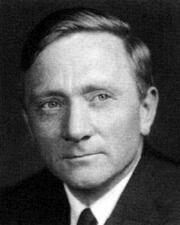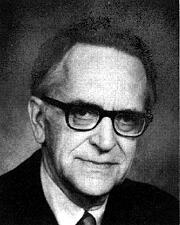
QUESTION TWO: What accounts for the emergence of issues, most notably those centered around rights-related liberalism, that inherently blurred the line between law and politics?

Estelle Griswold and Cornelia Jahncke of Planned Parenthood League of Connecticut
| Impeachment and independent counsel investigations represent one obvious way that the law has affected post-1970 politics. These cases represented examples when allegedly illegal activities forced an intersection between law and politics. But the post-1970 period also featured grassroots activists--grouped under the banner of rights-related liberalism--turning to the law as popular support for their agenda declined. A variety of movements pursued this course, but the most prominent were feminists and civil rights advocates. |
NOTE: This section of the module involves quite a few Supreme Court cases; for a primer on how historians should read cases, click here.
Making the Transition:
| American reform sentiment always has sported a strong interest in protecting individual rights--witness the abolitionists before the Civil War or the NAACP and ACLU, both of which traced their origins to the Progressive Era. But a rights-related component came to form a prominent part of American liberalism only with World War II. As Alan Brinkley argued in End of Reform, liberals began championing the cause of civil rights (and, to a lesser extent, civil liberties) during the war. Their renewed faith in capitalism turned them away from the antimonopolism of the 1930s; the battle against Nazism heightened the desire to purify American democracy. This ideological shift paved the way for the wide, biracial support the civil rights movement attracted in the 1950s and early 1960s. |
| For a variety of reasons, however, rights-related liberals saw support for their agenda plunge in the 1960s. Divisions within the civil rights movement and the emergence of issues such as forced school busing and affirmative action produced a white backlash against civil rights. This backlash was intensified by the GOP's "Southern Strategy," initially pursued by Richard Nixon in the 1968 presidential election and designed to stress issues that would drive a wedge between elements of the Democratic coalition. |
| In this environment, it came as little surprise that liberals turned to the courts--and especially the Supreme Court--as their protectors. Indeed, since the Brown decision of 1954, the Warren Court had consistently handed down rulings favorable to civil rights in particular and to the rights-related agenda more generally, as in cases such as Engel v. Vitale (which outlawed school prayer) and Miranda v. Arizona (which codified the rights of the accused). As Hugh Davis Graham has argued the most powerfully, however, this turn to the Court carried risks for rights-related liberals: it assumed that the Court would continue to support their viewpoint; and it intensified a growing anti-democratic thrust within the agenda itself. |
Both of these issues came back to haunt the rights-related agenda in the early 1970s, when the Supreme Court quite suddenly exhibited a very different ideological bent than the Warren Court of the mid-1960s. Earl Warren had retired, replaced as Chief Justice by Warren Burger. The newly appointed moderate Lewis Powell and conservative William Rehnquist further shifted the Court's center of gravity to the right. The Burger court almost instantly adopted a more restrictive interpretation of court-ordered busing. But, given the contentious nature of the case and the issue's contemporary relevance, perhaps the most appropriate point to examine the changing nature of civil rights law comes with the Bakke case of 1978.
| Allan Bakke, a 35-year-old white man, had twice applied for admission to the California (Davis) Medical School; he was rejected both times. As part of the university's affirmative action program, school reserved 16 places in each entering class of 100 for "qualified" minorities. Bakke, whose test scores and other admissions qualifications exceeded those of accepted black candidates, contended that the University of California violated the Fourteenth Amendment's equal protection clause, and the Civil Rights Act of 1964, by practicing an affirmative action policy that, in effect, discriminated on the basis of race. |
A badly fractured Court produced a confusing decision that did little to quiet the simmering debate over affirmative action. There was no single majority opinion. Four of the justices contended that any racial quota system supported by government violated the Civil Rights Act of 1964. Justice Lewis F. Powell, Jr., agreed, casting the deciding vote ordering the medical school to admit Bakke. But Powell reached his decision on the grounds that the rigid use of racial quotas as employed at the school violated the equal protection clause of the Fourteenth Amendment. The remaining four justices held that the use of race as a criterion in admissions decisions in higher education was constitutionally permissible. Powell joined that opinion as well, contending that the use of race was permissible as one of several admission criteria. The case produced powerful arguments on both sides, especially by the Court's only African-American Justice, Thurgood Marshall, and it can form a jumping-off point for a premade assignment on the issue.
![]()
While civil rights activists struggled in the new judicial environment, their counterparts in the feminist movement--at least initially--enjoyed better results. There are many ways to focus a segment on feminism and the law: examining the battle over the Equal Rights Amendment; the development of Title IX; or the rise of sexual harrassment law. But perhaps the best way to examine the complex relatioship between feminism and the law comes with the question of whether the right to an abortion is protected by the Constitution.
Federal abortion law centers around four main issues:
As David Garrow observes in Liberty and Sexuality--the most comprehensive study of the legal aspects of the pro-choice movement-- abortion rights activists rapidly concluded that the judicial rather than the political arena represented their most promising route for success. After several setbacks, they scored their first important victory in the 1965 case Griswold v. Connecticut [or take a look at the oral argument], in which the Court, by a 7-to-2 margin, struck down a Connecticut law banning the distribution and use of contraceptives. The majority opinion, written by Justice William O. Douglas, held that certain rights, though fundamental and not actually written in the Bill of Rights or the 14th amendment, nonetheless existed in the Constitution. One such right, Douglas claimed, was marital privacy, which he argued lay between the gaps of the 1st, 3d, 4th, 5th, and 9th amendments. Other Justices searched elsewhere in the Constitution to justify what became the "right to privacy." This legal reasoning proved to be among the most controversial in the Court's history--critics attacked it as the perfect example of an activist Court.
| Specific guarantees in the Bill of Rights have penumbras, formed by emanations from those guarantees that help give them life and substance. ... Various guarantees create zones of privacy. The right of association contained in the penumbra of the First Amendment is one, as we have seen. The Third Amendment in its prohibition against the quartering of soldiers "in any house" in time of peace without the consent of the owner is another facet of that privacy. The Fourth Amendment explicitly affirms the "right of the people to be secure in their persons, houses, papers, and effects, against unreasonable searches and seizures." The Fifth Amendment in its Self-Incrimination Clause enables the citizen to create a zone of privacy which government may not force him to surrender to his detriment. The Ninth Amendment provides: "The enumeration in the Constitution, of certain rights, shall not be construed to deny or disparage others retained by the people." |  --William O. Douglas, Griswold v. Connecticut |
Griwsold established the ideological basis on which later abortion rights decisions were based. But there were two other important points in the development: Eisenstadt v. Baird, (1972), invalidated a Massachusetts statute making it a crime for anyone to distribute contraceptives other than doctors and pharmacists prescribing them to married persons. Going beyond Griswold's findinds, Justice William Brennan, speaking for a four-vote plurality, held, "If the right of privacy means anything, it is the right of the individual, married or single, to be free from unwarranted government intrusion into matters so fundamentally affecting a person as the decision whether to bear or beget a child"; and, of course, Roe v. Wade (1973), which voided the abortion laws of nearly every state. Striking down a Texas statute that prohibited all abortions except to save the mother's life, a 7-2 majority of the Supreme Court held that abortion was a constitutional right that the states could only abridge after the first six months of pregnancy. More specifically, the Court held that the right to privacy included the right to abortion and the word "person" in the 14th amendment did not apply to the unborn.
| This right of
privacy, whether it be founded in the Fourteenth Amendment's concept of personal liberty and restrictions upon state action, as we feel it is, or, as the District Court determined, in the Ninth Amendment's reservation of rights to the people, is broad enough to encompass a woman's decision whether or not to terminate her pregnancy . . . We, therefore, conclude that the right of personal privacy includes the abortion decision, but that this right is not unqualified and must be considered against important state interests in regulation. |
 --Harry Blackmun, Roe v. Wade |
But, like the civil rights movement, the pro-choice movement soon came under strong attack, coordinated by the Catholic Church and by newly energized social conservatives in the Republican Party. By 1989, it appeared as if the Court might overturn Roe. It did not, but, in the two decisions below, it came very close.
The Challenges: Webster, Casey
Webster v. Reproductive Health Services, (1989) In the first sharp departure from Roe, a 5-4 Court majority upheld a Missouri statute stating that human life began at conception, barring use of state property for abortions, and requiring viability tests for advanced pregnancies. But, because Justice Sandra Day O'Connor declined to join the plurality opinion, the case did not explicitly overturn Roe, although both sides in the abortion debate expected that the Court soon would do so.
Planned Parenthood v. Casey, (1992) A Court sharply divided into three factions upheld a Pennsylvania law that contained a 24-hour waiting period provision for an abortion, an informed consent requirement, a parental consent provision for minors, and a recordkeeping requirement. But the majority also invoked the principle of stare decisis, the political need for judicial credibility and a consistent constitutional vision, to go on record against overturning Roe.
![]()
Making the Transition:
This segment can easily be ended through a current events discussion: neither of these issues shows any sign of disappearing from the political scene anytime soon.